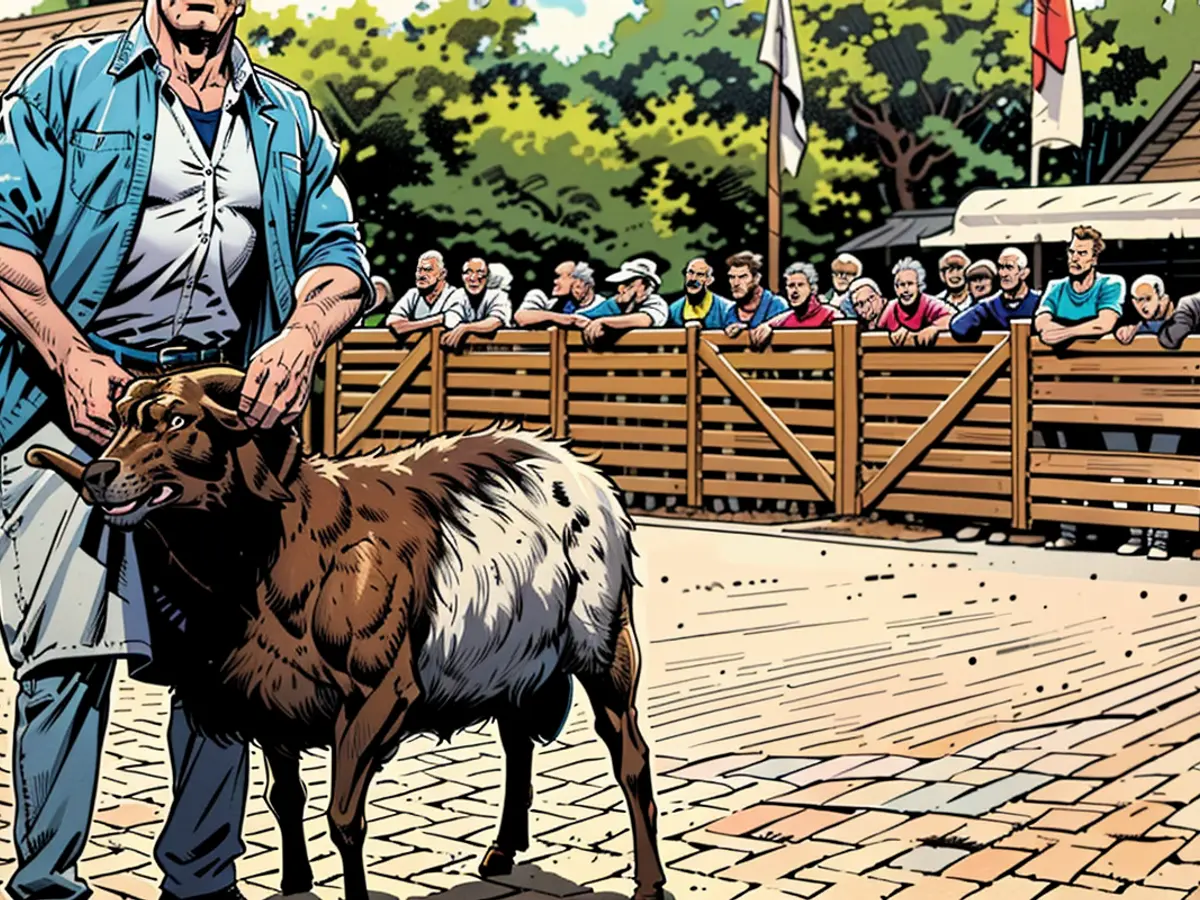Goose auction - Most beautiful goat-bill rooster 2024 comes from Jeversen
The currently most beautiful Heidschnucken ram comes from Jeversen in the commune Wietze. The one and a half year old young ram was awarded among 35 breeding rams in six age classes at the 75th Heidschnucken Day in Müden an der Oße in the commune Faßberg. The ram fetched 1,500 Euro at the auction. Breeder Detlef Fischer raised it on his farm in the Celle district.
In addition to "Mister Müden", the second place also came from the same breeding, earning 1,500 Euro. A commission of the Lüneburg Heidschnucken Association selected the most beautiful and fittest animals. The winning herd came from Günter Rüpke from Winsen/Aller, it was specially distinguished in the southern Heide region.
Healthy legs are important
Only the best yearling rams are allowed to the auction. The young rams were selected from the approximately 1800 to 1900 born ram lambs of the 23 breeding farms. All 35 selected rams changed hands and were sold on average for 769 Euro. About 500 people gathered on the spacious terrain, as a spokesman for the Association of Lüneburg Heidschnucken Breeders said.
Criteria for selection include the leg stance and a straight back. Healthy legs are particularly important because the Schnucken often have to cover long distances. The fleece on the head must always be black. Weight, external appearance, lineage, overall size, horn position, muscles, and wool and fleece quality are evaluated.
Symbol animals of the Lüneburg Heath
The thrifty sheep with the long, grey-black wool are the symbol animals of the Lüneburg Heath. There are estimated to be more than 10,000 of them in Niedersachsen. Once they were the most important livestock breed in the region. The Schnucken are mainly used in landscape management.
Shepherds demand wolf hunting
"This breed is threatened with extinction, it must be protected," said Wendelin Schmücker, chairman of the German Sheep Breeding Promotion Association. "The wolf increases by 30% every year in Germany, in Niedersachsen we currently have about 52 packs, 3 pairs, and 2 lone wolves, which is approximately 600," he calculated. Each animal needs about four kilograms of meat as daily food. "It will be a hot autumn when the young rams migrate. They all want to be full."
He demanded a wolf management plan at a press conference in Müden: "We need to reach the point where harm doesn't have to happen first," demanded Schmücker. Through hunting, the wolves should learn to be afraid again. A flat rate premium from the state of Niedersachsen for torn sheep and goats and quick disposals was not sufficient, the shepherd from Winsen/Luhe emphasized.
- The Heidschnucken Day in Müden an der Oße is held annually in the Celle district, specifically in the commune Faßberg.
- The auction for the best yearling rams takes place in the Celle district, attracting many interested buyers.
- The Lüneburg Heidschnucken Association has its headquarters in the district of Celle, where they oversee the breeding and care of the Heidschnucken sheep.
- Wolves pose a threat to the young Heidschnucken rams that migrate during the autumn season in Lower Saxony, particularly in the region of Winsen.








